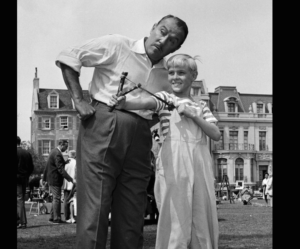Desi Arnaz, often seen as the supporting figure to his famous wife Lucille Ball on the iconic 1950s sitcom I Love Lucy, lived much of his career in her shadow. While memorable scenes like Lucy stomping grapes, handling chocolates on a conveyor belt, or getting her fake nose lit by William Holden have become TV classics, Arnaz was often viewed as just a backdrop to these moments.
Beyond playing Lucy’s straight man, Arnaz faced frequent mockery for his Cuban heritage, both on and off screen. He was one of the rare Latino actors on American TV and film at the time, portraying a loving husband and father rather than the stereotypical roles often assigned to Latino characters. His character became immortalized by the catchphrase, “Lucy, you got some ‘splainin’ to do!”
Todd S. Purdum’s biography, Desi Arnaz: The Man Who Invented Television, gives a well-researched and engaging look at Arnaz’s true impact—not just as an entertainer but as a visionary businessman who helped revolutionize early television production.
Born in 1917 to a prominent Cuban family, Arnaz’s privileged life was upended by the 1933 Cuban revolution. His family fled to the U.S., suffering great losses and hardships. Arriving in Miami with limited English, Arnaz took on any work he could find. Despite not being able to read music, his talent as a singer and musician landed him gigs with bandleader Xavier Cugat and helped popularize the conga line dance.
Arnaz’s Broadway and Hollywood career intersected with Lucille Ball’s during the 1940s, at a time when neither had fully broken through in film. Their marriage, marked by struggles including Arnaz’s drinking and womanizing, made the new TV medium a practical opportunity for both. Ball insisted Arnaz be part of I Love Lucy when it transitioned from radio to television in 1951, partly to save their marriage.
The show became a platform for Arnaz’s innovative ideas. He pushed for episodes to be filmed before a live audience in Los Angeles rather than broadcast live from New York without one. This allowed for higher-quality visuals, reruns, and syndication—concepts new to television at the time. Using three cameras simultaneously and designing a studio for audience seating, Arnaz set a new standard for sitcom production, also helping shift TV production to the West Coast.
I Love Lucy became the first show to reach 10 million homes, and Arnaz’s company, Desilu, grew into the world’s largest studio by hours of filmed content by the late 1950s. Despite his creative and business successes, Arnaz’s battle with alcoholism and infidelity eroded his career, marriage, and health.
Lucille Ball faced her own challenges, typecast as Lucy and unable to move beyond that character easily. However, she managed Desilu with business savvy, approving groundbreaking shows like Star Trek and Mission: Impossible. When she sold Desilu in 1967, she walked away with a fortune equivalent to about $100 million today.
Though both remarried, Arnaz and Ball remained connected through their children, shared business interests, and an enduring professional legacy. Their deep affection for each other remains clear—no explanation needed.















